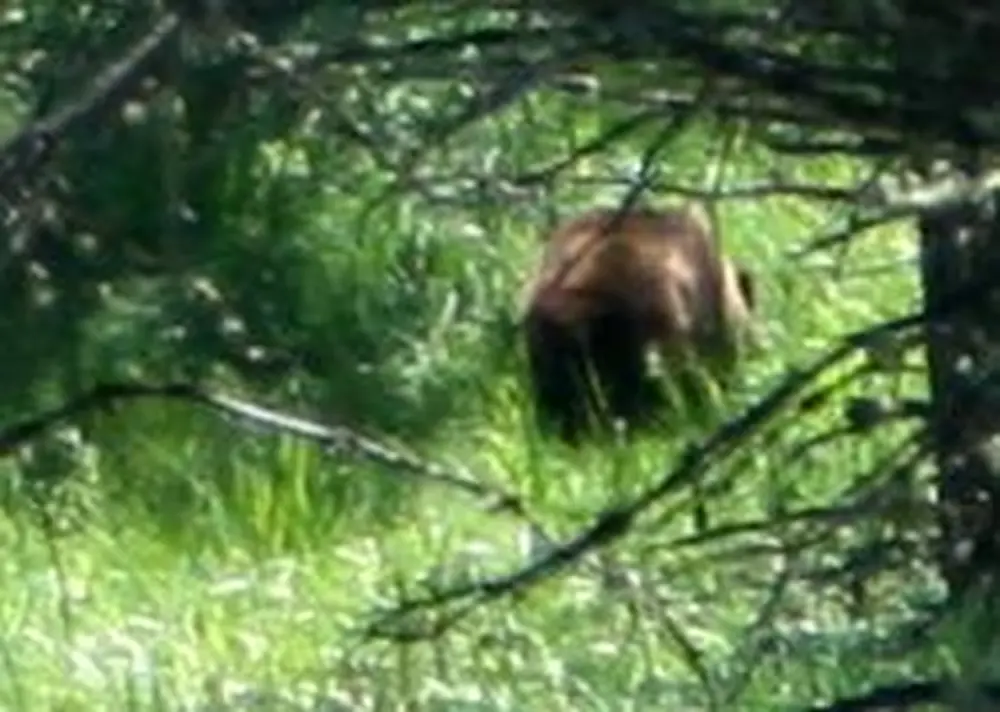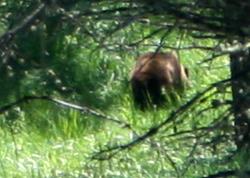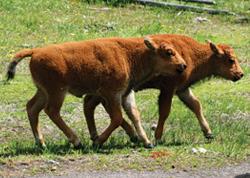
Eleven University of Illinois students were nearing the end of a seven-mile hike around Ribbon Lake in Yellowstone National Park. Under a steady drizzle, they had trudged through grassland and a spruce/fir forest—the “Mud March” they called it. They had even come uncomfortably close to a bison bull and spotted fresh grizzly bear prints on the trail.
After seven miles in wild country, Professor Robert Pahre stood at the end of the trail to watch their reaction as they came out at Artist Point—a popular spot where artists paint pictures of the dramatic Yellowstone Falls. But it wasn’t just the waterfalls that took the students’ breath away. It was also the startling transition from wilderness to civilization. They suddenly stepped out into a wide parking lot packed with cars, RVs, and tourists, some wearing flip-flops or dress shoes.
The boundaries between wilderness and civilization can sometimes be dramatic, and the political controversies that run along these boundaries was a focus of Pahre’s unique eight-day class in Yellowstone and nearby Grand Teton National Park last June—“The Politics of Wildlife and Wilderness.”
Pahre, an LAS political science professor, led the class with graduate student Carie Steele. Pahre is a specialist in international trade relations, analyzing the tensions among countries as goods flow across national boundaries. He says animal movement across boundaries can create similar tensions, and there are few better places to study this dynamic than Yellowstone and Grand Teton.
Six national forests and two national wildlife refuges border the two national parks, not to mention many municipalities, counties, and other governmental agencies. The parks also extend into three states—Idaho, Wyoming, and Montana—so boundary issues abound, Pahre points out.
“Animals cross boundaries and don’t really read the signs when they go across,” he says. The resulting tensions are most obvious when it comes to wolves, grizzly bears, and bison.

Populations of grizzly bears and wolves are quite healthy in Yellowstone—a far cry from the days when wolves were wiped out in the parks, and grizzlies nearly were as well. In fact, Pahre says, in biological terms both animals should no longer be classified as either endangered or threatened in the Yellowstone and Grand Teton area. For that reason, the Fish and Wildlife Service would like to remove them from the list.
However, politics have kept the grizzlies on the list, and there are attempts to put wolves back on the list, because if they are taken off, then the management of wolves and grizzlies reverts from the federal government to the state. And there has been federal/state conflict over how to deal with the animals.
Wyoming would like to classify wolves as vermin, according to Pahre, so the animals can be shot on sight if they wander from federal land. Consequently, the federal government would like to keep wolves on the protected list in Wyoming—although the issue is still being wrangled over in the courts.
Meanwhile, wolves have been taken off the list in Idaho, which allows the hunting of wolves off federal land but only down to a certain population level. For now, they are also off the list in Montana, which promotes a system of zones. In certain ranching zones of Montana, the wolves can be hunted extensively; but in zones bordering the parks, hunting is banned.
Pahre says you can certainly understand the concerns of ranchers, whose livelihood depends on livestock that can be picked off by wolves. Wolves pose a risk to calves and sheep, although he says North American wolves do not attack humans. There has been only one case—a disputed case—of a wolf killing someone in North America.

Bison also pose political issues, for Yellowstone hosts the largest unfenced herd in the country. Because they can transmit the disease brucellosis to cattle, the Park Service and other agencies try to harass bison back into the park, using helicopters and snowmobiles. But if that doesn’t work, the government organizes hunts to keep these large, nomadic creatures from breaking through fences and causing other trouble.
During the trip, Pahre’s class dropped in at the commune of the Buffalo Field Campaign, an activist group that believes bison should be allowed to graze anywhere on their natural range, even if that includes private land. They have tried to stop bison from either being shot or harassed back into the park by putting themselves between the bison and the hunters.
Since 2001, however, some of the group’s tactics, such as handcuffing themselves to federal buildings, have become classified as terrorism, bringing severe penalties, Pahre says.
The U of I students also learned that animals have their own set of boundaries. While hiking around Ribbon Lake, they came around a turn on the trail and suddenly found themselves less than 50 yards from a bison bull. Bison display as many as two dozen signs of aggression, and this bull signaled two of them. It raised its tail and rolled in the dust.
Pahre and Steele calmly led the group on a detour off of this part of the trail, keeping a healthy distance from the bison. As they know, some boundaries aren’t meant to be crossed.


